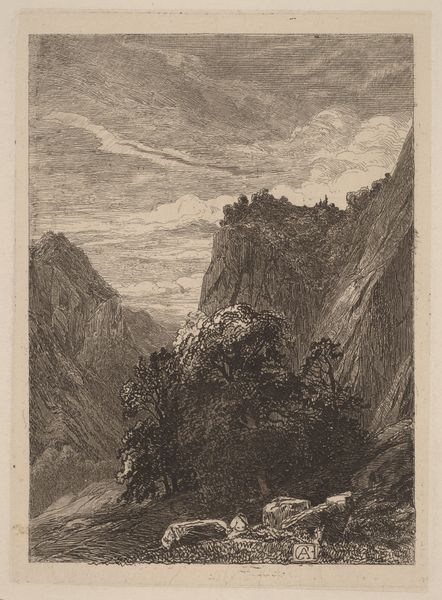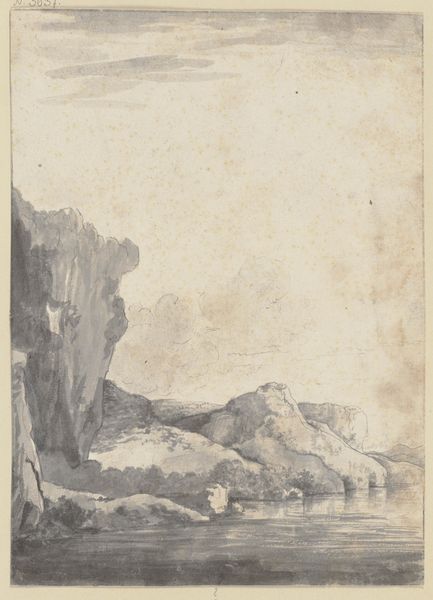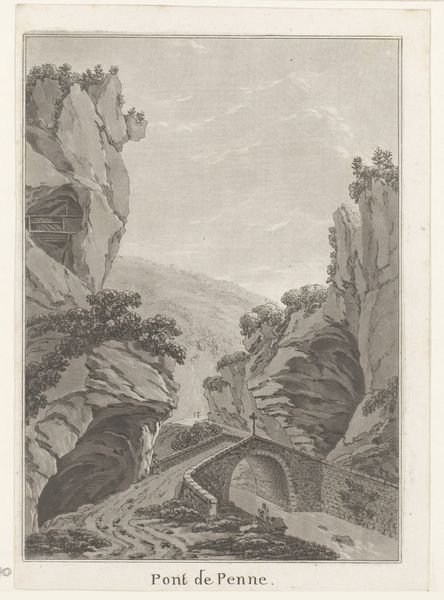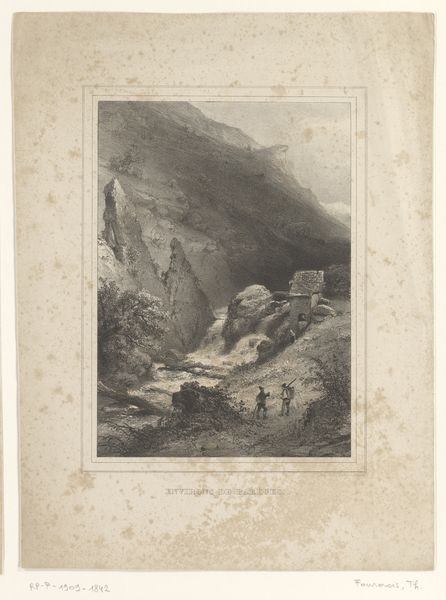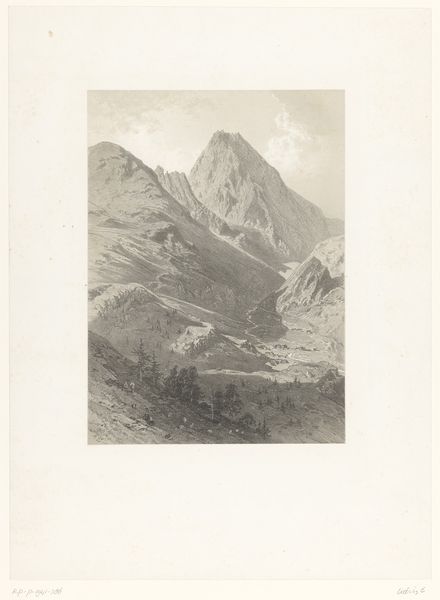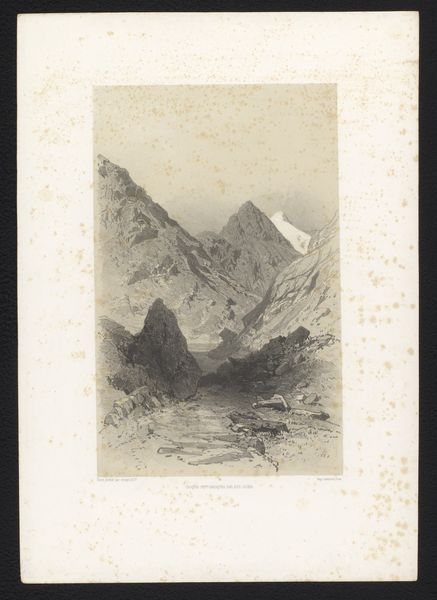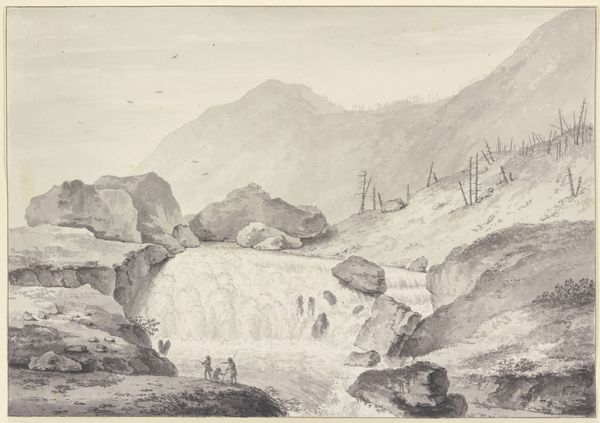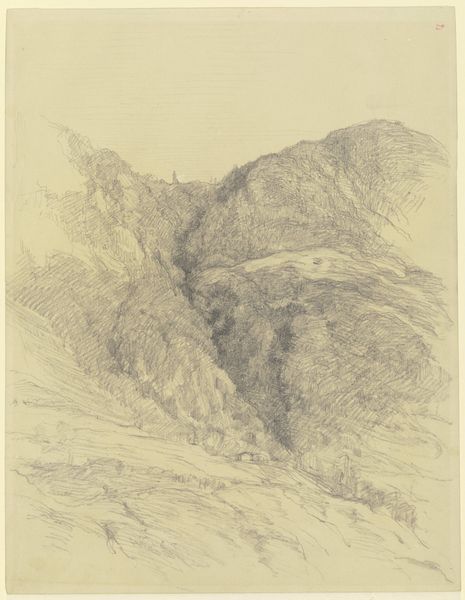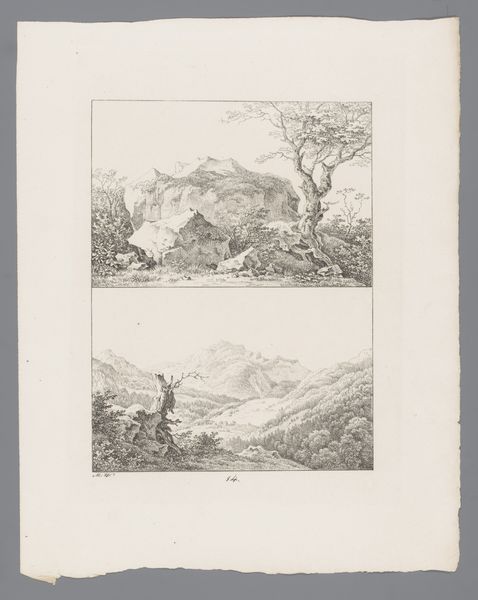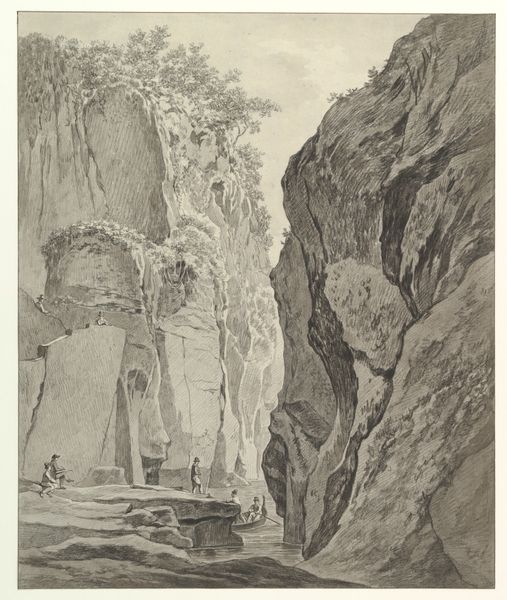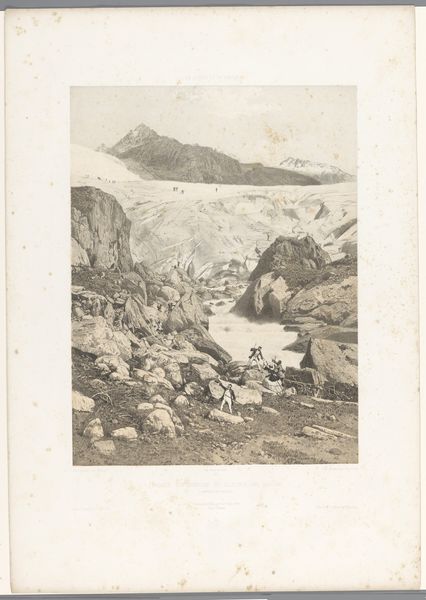
drawing, watercolor, ink, chalk
#
pencil drawn
#
drawing
#
pencil sketch
#
landscape
#
charcoal drawing
#
watercolor
#
ink
#
pencil drawing
#
chalk
#
watercolor
#
realism
Copyright: Public Domain
Curator: We are now standing before "Diether and Brun Wandering" by Wilhelm Steinhausen, likely created around 1884. It is currently held here at the Städel Museum. What strikes you first? Editor: The somberness. The muted tones give it a timeless quality, like a faded photograph holding the echoes of a bygone era. And these figures, are they lost or are they on a pilgrimage? Curator: That's interesting. From my perspective, I think we must ask what motivated Steinhausen to create such a bleak rendition of wandering figures in the landscape. Is it about individual journeys, or more of a broader commentary on marginalization in the late 19th century? Were Diether and Brun, perhaps, metaphors for larger societal issues? Editor: I see the two figures as archetypes perhaps, dressed in simple clothing reminiscent of mendicant friars, draped against the mountainous terrain as if they are inseparable. I wonder about the tower structure rising behind the two pilgrims or wanderers, its architectural style seems symbolic as well. Curator: Indeed. Think about the medieval revivalism in German art and culture at the time, a rejection of modernity, and the rise of industrial society. Here, the figures become part of a carefully crafted commentary. Do we want to see these figures as victims or as examples of human resilience? Are their social and religious identities influencing Steinhausen's intentions? Editor: These figures, positioned near the painting’s foreground, remind me of something seen in a dream or from childhood memories. I think that structure at the summit holds a great deal of the answer. Curator: Yes. It evokes the longing for a past. It also reinforces my feeling about art history that is inclusive of class and identity. It’s not simply art about the wealthy; it’s about people like Diether and Brun as well. Editor: And perhaps the enduring iconography of the wanderer represents not just physical movement but a deeper search for meaning. That seems particularly relevant today. Curator: I agree entirely. It offers insight into art that focuses on the less-heard narratives that need recognition, and makes Steinhausen's sketch more pertinent than ever.
Comments
No comments
Be the first to comment and join the conversation on the ultimate creative platform.
